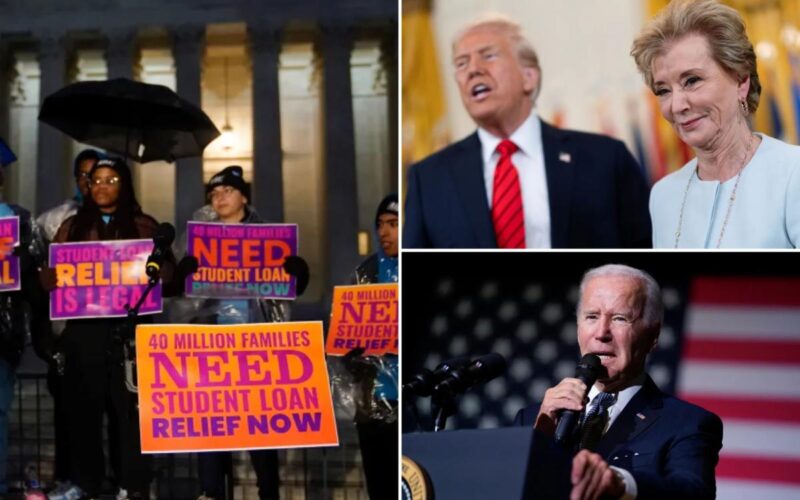Millions of student loan borrowers can breathe a sigh of relief now that the Department of Education has agreed to restart some major loan forgiveness programs.
The White House said this week it will again start processing loan forgiveness for eligible borrowers in two different income-driven repayment plans that it had put on pause.
“Quite frankly, this is huge,” Erica Sandberg, consumer finance expert at BadCredit.org, told The Post. “It will take millions of borrowers out of limbo.”
Why was student loan forgiveness paused?
In February, an appeals court upheld a ruling that blocked a Biden-era repayment program known as SAVE, placing loans for 8 million Americans in forbearance.
President Trump’s Education Department argued that the ruling should apply to other income-driven repayment programs, like Income-Contingent Repayment and Pay as You Earn, putting those two plans in limbo.
The American Federation of Teachers – which has 1.8 million members, including teachers, healthcare employees and public workers – sued the Trump administration to restart debt cancellation.
What are income-driven repayment programs?
More than 13 million Americans rely on income-driven repayment plans for their student loans, according to the National Consumer Law Center.
These plans calculate monthly payments for borrowers as a percentage of their discretionary income — between 10% to 15%.
IDR plans typically cancel any remaining debt after 20 or 25 years. There is no income cap, so these programs are widely used.
How will repayment programs change under Trump’s “big, beautiful” bill?
The GOP’s “big, beautiful” tax and spending bill is slated to phase out Income-Contingent Repayment and Pay as You Earn by July 1, 2028. These two plans have over 2.5 million enrollees total, a higher ed expert estimated.
Millions of low- and middle-income Americans will also be booted off of SAVE. This program calculated monthly payments as 10%, 15% or 20% of a borrower’s discretionary income.
Trump’s replacement – called the Repayment Assistance Plan – goes into effect in July 2026. It will calculate monthly costs as coming between 1% to 10% of discretionary income.
The new plan does not have a payment cap, meaning many borrowers could end up paying a higher cut of their salary than they previously did.
A typical borrower could see their monthly student loan payments jump by hundreds of dollars, research nonprofit Student Borrower Protection Center warned in an analysis over the summer.
Under Trump’s new plan, borrowers will be able to petition for their remaining balance to be waived after 30 years, Sandberg said.
The only other option for borrowers will be the standard plan, which gives borrowers a fixed monthly payment to have their loans paid off over 10 to 25 years, depending on the sum.
“As a borrower, the highest payments will be through the standard 10-year plan,” Sandberg told The Post.
The standard 10-year plan does not offer debt cancellation, since loans will be paid in full.








